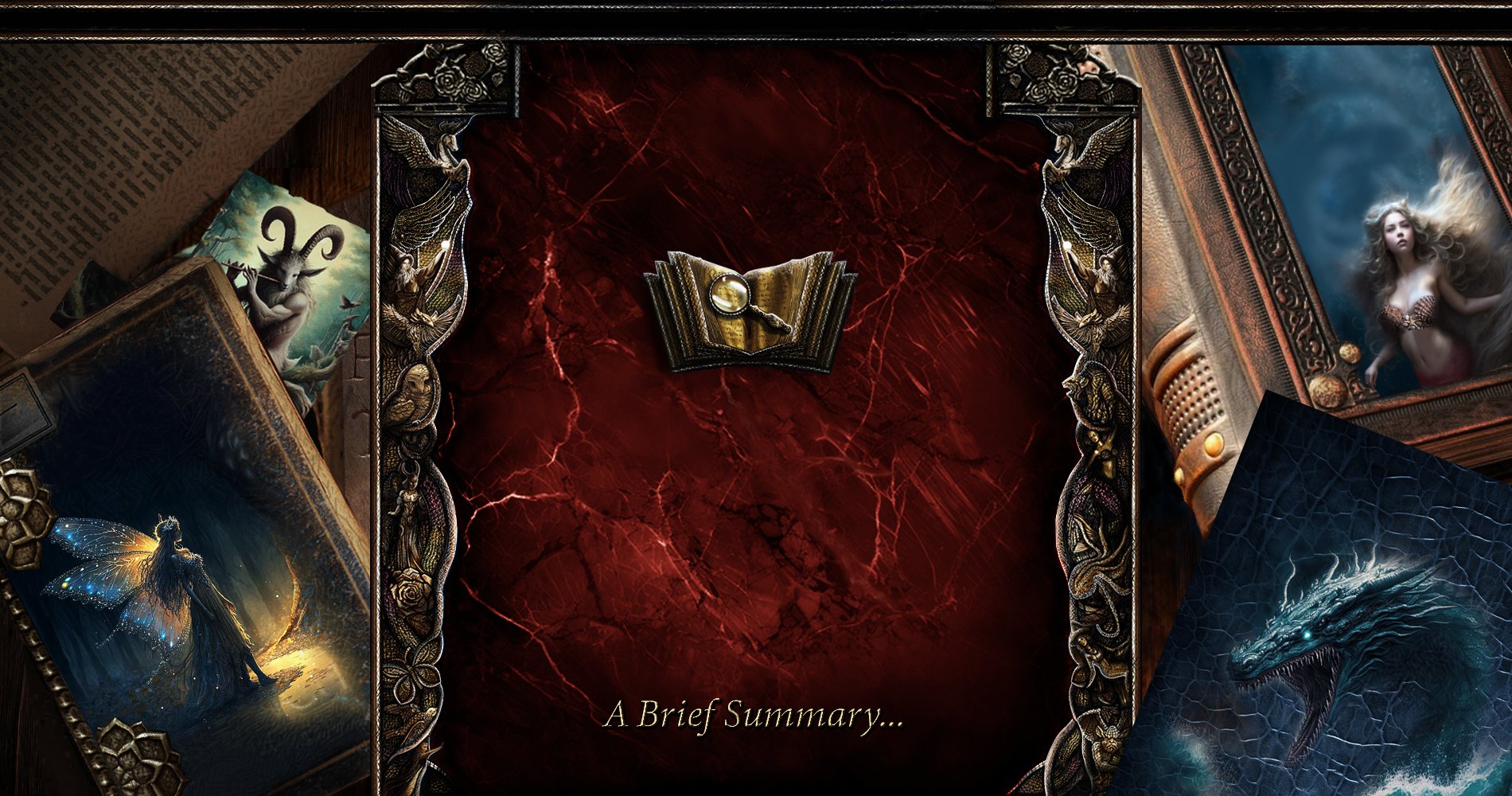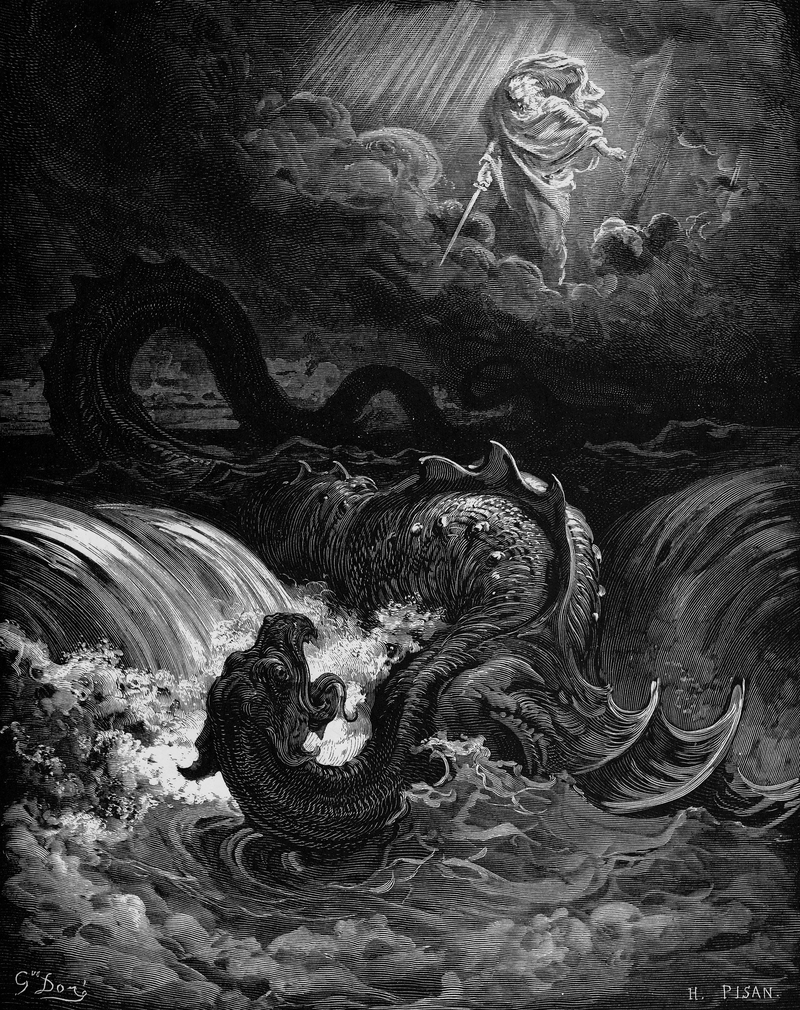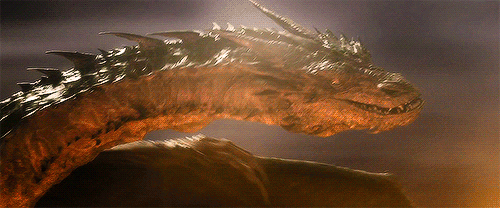
The Origins of
Mythology

Mythology is a topic that has fascinated people since the beginning of time. From the ancient Greek mythology of Zeus and the Gods to the Nordic mythology of elves and fairies, we can find stories from all over the world that date back thousands of years.
What makes these accounts so inspiring is the fact that, regardless of water and land mass separation (at a time when travel was extremely difficult), many of these ancient texts can describe the same mythical creatures.
There are, of course, too many to list here, but we thought we would do a little countdown featuring FIVE of the most well-known types of mythological creatures, as well as verses of where you can find them mentioned in the Bible and other ancient texts.
By S N Strutt
© Adobe Stock

CENTAURS
A Centaur (occasionally called hippocentaur, or lxionidae) is a creature with the head, arms and torso of a human and the legs and lower body of a horse. It is considered to be a type of chimera (part human, part animal).
Centaurs are believed to have originated from Greek Mythology and can be traced back to around the 5th century BC (although the myths themselves and artefacts containing depictions of them can be concluded as much older).
The Kalibangan cylinder seal, dated to be around 2600-1900 BC, found at the site of the Indus-Valley civilization, shows a battle between men in the presence of centaur-like creatures. There are hundreds of thousands of artefacts, statues, ornaments and writings from around the world that portray or describe centaurs.
‘The Battle of the Lapiths and the Centaurs’ (also known as Centauromachy) is one of the most popular and significant centaur myths and can be found in Greek works of art.
One of the most famous stories depicting a centaur can be found in the ‘Legend of ‘Hercules’, a tale from Greek mythology about the son of Zeus who kills a famous centaur known as ‘Nessus’.
There are descriptions of centaurs in the ‘Iliad’ where Homer refers to them as ‘beast men’ or ‘hairy men’. (1.268; 2.743)
In the Bible, centaurs go by the name of Nephilim or Satyrs. In Egypt, the concept of centaurs was adapted to include depictions of humanoid bodies and the head of an animal. The famous Sphinx in Egypt was modelled after a type of centaur adaption (the body of a lion, and the head of a human).
Regardless of opinions of whether they existed or not, it cannot be denied that centaurs have truly made their presence known with more and more depictions of them still being discovered to this day.
Interesting fact: The ‘Sagittarius’ constellation (the archer) is commonly depicted with the symbol of a centaur.

LEVIATHAN
‘Those who are ready to arouse Leviathan, May the stars of its morning be dark’ — Job 3:8-16.
‘And Behemoth will reveal itself from its place, and Leviathan will come from the sea’ — 2 Baruch 29:4.
Leviathan is a ferocious mystical sea creature famously known to terrorise and sink ships that would cross its path. It has been depicted many times in theology and mythology.
The word Leviathan comes from the Hebrew word ‘Livyatan’ which means coiled or twisted.
‘Leviathan’ is mentioned six times in the Tanakh (Job 3:8, Job 40:25—41:26, Psalm 74:14, Psalm 104:26 and twice in Isaiah 27:1). It can also be found in the Book of Revelations, 2 Baruch and the Book of Enoch.
In literature, we can find Leviathan mentioned in works such as ‘Paradise Lost’, ‘Romanzaro’ (by German poet Heinrich Heine) and ‘Jerusalem’, a famous poem by William Blake.
In Jewish mythology, the name Leviathan refers to a variety of descriptions on monstrous creatures, including a primordial sea serpent, a dragon, a snake, a crocodile, or a whalelike animal.
Greek Mythology also references a similar description of an extremely powerful serpent-like creature known as ‘Typhon’.
Leviathan is also featured in a famous poem by William Shakespeare where he references it by name:
‘As send precepts to the Leviathan to come ashore, Therefore take pity on your town and of your people.’
In modern times, the concept of Leviathan has made its way into television and film (such as 2001 Disney’s film ‘Atlantis: The Lost Empire, and 2019 ‘Godzilla’ which features a Titan named Leviathan).
There can be no doubt that Leviathan has had a huge influence on our civilisation for many thousands of years. It symbolizes the embodiment of incredible power, chaos and destruction and is often called ‘the demon of the water’.
‘The Destruction of Leviathan’ by Gustave Dore (1865)
LEVIATHAN
A modern interpretation of Leviathan: GIF Stock

CHIMERAS
‘And Uriel said to me: “Here shall stand the angels who have connected themselves with women, and their spirits assuming many different forms are defiling mankind”.’—1 Enoch 19:1
Now we know that centaurs are a type of chimera, but are there other types? According to Greek mythology, a Chimera is a fire-breathing female monster with a lion’s head, a goat body and a serpent’s tail (although accounts also depict it as a type of hybrid created through a fusion of a sperm and egg of a different species).
Biblical texts of chimeras point to a very advanced race that used to dwell on Earth and was capable of mixing DNA to create such horrors. ‘The Book of Enoch’ describes stories of these beings and refers to them as ‘the Watchers’ (also known as ‘the fallen angels’). As the story goes, the watchers came down and began mixing with the human women. The offspring that were created from these unions is what created the species that became known as Nephilim, or chimeras. (This is also where the story of ‘giants’ comes from).
Essentially all mythological creatures are hybrids of some sort, all made from the interlinking and perfect blending of DNA to create a myriad of results.
Since we have seen how much is possible to create through cross-breeding of certain species (such as dogs) it is not very far-fetched to believe that it would be possible with the right technology to blend different types of DNA to create a whole new type of sub-species (i.e. many of the creatures depicted in mythology).
Some have speculated that Biblical texts of ‘the watchers’ are a simplified version of accounts that have been found from all over the world of an ancient race known as the ‘Anunnaki’. According to numerous records, the Anunnaki were a highly evolved civilization who were able to genetically tamper with physical matter and alter human DNA to create the hybrids that we now know as chimeras.
According to various accounts and depictions, the Anunnaki (or fallen angels) eventually left planet Earth and their offspring (the Nephilim) eventually died out leaving us with the myths and legends that we now have today. Given that there are thousands of hieroglyphics, ancient murals, carvings, texts and numerous references that mention these strange creatures it has led a growing number of people to believe that they could have in fact, once existed.
These two ancient carvings were found on two separate occasions in completely different parts of the globe. The first was found in Ecuador and the second, in Mesopotamia (a distance of 8,062 miles).

MERMAIDS
(SIRENS)
‘And the women also of the angels who went astray shall become sirens.’ — 1 Enoch 19.2
‘Neither the melodies of sirens nor the songs of swans attract the attention of their hearers.’ — 4 Maccabees 15:21
It probably does not come as a surprise that we have ranked ‘mermaids’ as our number 2 for most universally known mythological creatures. One of the most well-known depictions of a mermaid was featured in the famous novel ‘The Little Mermaid’ by Hans Christian Anderson in 1836. Since then, we have seen a host of adaptations celebrating the well-loved story through various screenplays and full-feature animated films. (Disney, 1989, remastered version, 2023)
But where did the origins of mermaids first begin? One of the earliest mermaid legends first appeared in Syria around 1000 BC when the goddess Atargatis dove into a lake to take the form of a fish.
Mermaids (or sirens) are a type of water-dwelling chimera. They have appeared in myths, legends and stories from almost every sea-fearing civilization for over the last few thousand years. It does stand to reason that in terms of hybrids, a creature capable of living on both land and water would make for a very enticing and captivating blend.
Perhaps that is why our fascination with them has not drained in any way over thousands of years, making them arguably one of the most well-studied of all mythological creatures.
The clearest example of merfolk in Greek mythology began with the son of Poseidon and Amphrodite who was called Triton. Triton (who was considered a god) was most often illustrated as a merman who would blow the conch shell while riding sea waves.
Tales of mermaids can be found all over the globe, from the North to the West of Europe and even as far as the Orient, including China and many other cultures.
Persians viewed mermaids not only as half-fish but also as complete human beings who were able to live in the sea.
In the many stories that were written about them (even in the famous collection of folk tales ‘One Thousand and One Nights’), there are accounts of beautiful people who were able to live on both land and water.
Mermaids have been described many times in legends as very alluring creatures who would sing beautiful songs and lure unsuspecting sailors to their deaths. They have been shown as beautiful, peaceful aquatic creatures in some depictions and ferocious hunters in others. Much like the ocean, they remain unpredictable, wild and untamed.
Regardless of divided opinion, there can be no doubt that mermaids will continue to capture our imagination. They provoke a curious part of our psyche, with their ability to live in both worlds, both above and below. They represent our desire to explore and escape the limitations of our terrestrial lives. Because of this, our fascination and acute focus on them are likely set to remain.

DRAGONS
‘And there appeared another wonder in heaven, and behold a great red dragon.’ — Revelation 12:3
We’ve listed dragons as our number ONE most well-known mythological creature. (Whilst it is hard to determine which one has had the most widespread reach, we believe that dragons are likely to have had some of the most influential impact on mankind throughout the ages).
But where did the emergence of dragons originate from?
One of the earliest depictions of dragons can be found in illustrations and carvings of giant snakes (ancient mythologies from the Far East and Mesopotamia, 2000 BC).
Dragons can be found in thousands of books, ancient texts and literature. They are mentioned by name at least thirty-five times in the King James version of the Bible and also feature in the Torah and the Apocrypha (which tells us a story known as ‘Bel and the Dragon’).
Numerous interpretations represent the symbolism of a dragon. In Chinese culture, the dragon represents good luck, health, and also the male element of Yang. In ancient Islam, the dragon represents chaos and disorder.
In the Bible, the dragon is often depicted as a ferocious archetype that represents evil or ‘Satan’ that threatens to consume all of mankind.
‘And the great dragon was cast out, that old serpent, called the Devil, which deceiveth the whole world.’ — Revelation 12:9
Dragons have had a huge influence on storytelling and literature throughout history. During the late English Renaissance, the famous poet William Shakespeare referenced dragons numerous times in his various works of art, stories and plays.
In J R Tolkien’s fantastical and well-loved novel ‘The Hobbit’ written in 1937, he introduced us to ‘Smaug’, a ferocious dragon who hoarded treasure and was considered to be the last great dragon of Middle Earth.
Sixty-eight years later J K Rowling led us into another exciting dragon-based spectacle in ‘Harry Potter and the Goblet of Fire’ where the main character Harry must defeat a Horntail dragon in to progress to the next level. The story served well to captivate our imagination and enthral us deep into one of our favourite types of archetypical stories: ‘The hero’s journey’.
Fast-forward four more years to when we received what might well be the biggest nod to the magnificence of dragons in modern history with the highly acclaimed and ground-breaking television series, ‘Game of Thrones’ (George R R Martin).
‘Game of Thrones’ drew in a very wide audience in 2011 and managed to put dragons firmly back on the map. The story tells the tale of three powerful dragons who are ruled by a Targaryen ‘dragon queen’ known as Daenerys.
Daenerys sets out on a conquest with the aid of her scaly companions. Her goal is to restore her birthright as ruler of the Iron Throne, a coveted position sought after by all of the nations in the land. The sequence makes for a feast of incredible battle scenes and breath-taking spectacles. Television producers soon caught on to our insatiable appetite for more dragons on our big screens, resulting in ten types of dragons in the Harry Potter franchise and sixteen types of dragons in the follow-up series to Game of Thrones which was called, ‘House of the Dragon’.
There can be no doubt that dragons have had a monumental influence on us throughout the ages. They represent fire and freedom and are best encapsulated as the ‘yin-yang’ of incredible power. For this reason, they are likely set to continue to hold our attention for many centuries to come.


































